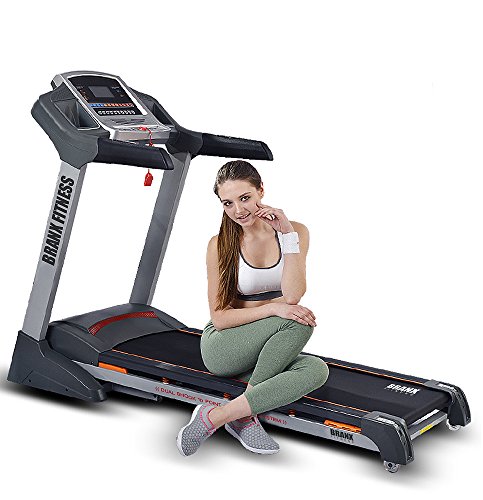The Most Common Mistakes People Do With Non Electric Treadmill
The Rise of Non-Electric Treadmills: An Eco-Friendly Choice for Fitness Enthusiasts
Over the last few years, the physical fitness industry has experienced a surge in demand for non-electric treadmills. As people end up being more mindful of their carbon footprint and look for sustainable choices for their workout regimens, non-electric treadmills have actually emerged as an attractive alternative to their motorized equivalents. This post delves into the advantages, types, and functions of non-electric treadmills, culminating in a thorough FAQ section to address typical inquiries.
What is a Non-Electric Treadmill?
A non-electric treadmill, often described as a manual treadmill, runs without a power source. Rather of being propelled mechanically, the user's body weight and movement drive the belt. This design creates a distinct experience, typically requiring more effort but offering numerous advantages in regards to fitness and sustainability.
Advantages of Using Non-Electric Treadmills
Sustainability: Non-electric treadmills remove the requirement for electricity, making them ecologically friendly. This reduction in energy usage can substantially contribute to lower electricity costs and a reduced carbon footprint.
Boosted Workout Efficiency: Users need to actively engage their muscles to preserve speed, which can cause more reliable exercises. This increased effort can equate to a greater calorie burn compared to electric models.
Adaptability: Many non-electric treadmills can be gotten used to provide different incline levels. This feature enables users to customize their workouts, targeting various muscle groups and tough themselves in new ways.
Sturdiness: Generally, non-electric treadmills have less mechanical parts than powered variations, resulting in lower maintenance costs and increased longevity.
Compact Design: Many non-electric treadmills are created with mobility in mind, making them easy to move and store, perfect for those with limited area.
Types of Non-Electric Treadmills
Non-electric treadmills can be categorized into several types based upon design and functions:
Type
Description
Pros
Cons
Woodway Treadmills
Understood for their curved shape, providing a special running experience.
Decreases influence on joints, perfect for runners.
Generally more costly.
Flat Non-Electric Treadmills
Fundamental design offering simple functionality.
Inexpensive and basic to utilize.
May not have advanced functions.
Incline Manual Treadmills
Allows users to set an incline for added problem.
Versatile and adjustable workouts.
Can be physically demanding.
Folding Non-Electric Treadmills
Space-saving designs that can be easily kept away.
Convenient for small living spaces.
May be less sturdy than non-folding alternatives.
Secret Features to Consider
When choosing a non-electric treadmill, customers must focus on the following functions:
Build Quality: Ensure that the frame is tough and made of resilient products to stand up to day-to-day usage.
Running Surface: A wider and longer running surface offers a more comfy experience, specifically for taller individuals.
Incline Options: Adjustable incline settings can boost exercise variety and strength.
Weight Capacity: Check the weight limit to guarantee the treadmill accommodates all designated users.
Mobility: If area is a concern, search for a light-weight treadmill with wheels for easy motion.
Service warranty: A good service warranty reflects the manufacturer's confidence in their product, providing assurance to customers.
Non-Electric Treadmill vs. Electric Treadmill
Function
Non-Electric Treadmill
Electric Treadmill
Source of power
Manual (no electricity required)
Requires electricity
Maintenance
Minimal, frequently needs no repairs
May need mechanical maintenance
Calorie Burning
Usually higher due to user effort
Varies, often lower for the exact same speed
Customizability
Restricted to manual adjustments
Offers numerous pre-set programs
Cost
Usually more economical
Can be more expensive due to functions
Frequently Asked Questions (FAQ)
1. Are non-electric treadmills appropriate for newbies?
Yes, non-electric treadmills can be suitable for newbies, although they might require a steeper knowing curve for those unfamiliar with manual treadmills. A gentle start on a low incline can relieve novices into their physical fitness journey.
2. How do I preserve a non-electric treadmill?
Upkeep is minimal. Routine cleansing and checking for any wear on the belt or deck can help prolong the life of the treadmill. Constantly describe the manufacturer's standards for detailed maintenance directions.
3. Can I work on a non-electric treadmill?
Definitely! Many non-electric treadmills are designed to accommodate running. Nevertheless, users ought to start by walking and slowly increase their speed and incline as they build strength and endurance.
4. How do non-electric treadmills manage weight?
Most non-electric treadmills have a weight capacity comparable to electric models. Nevertheless, it is important to examine the requirements to ensure proper assistance for the user's weight.
5. Are there any drawbacks to using a non-electric treadmill?
Some users may find that non-electric treadmills require more effort, potentially making them more tiring. Additionally, they might do not have advanced functions found in electric designs, such as integrated exercises or heart rate screens.
As more people seek environment-friendly and effective fitness options, non-electric treadmills have begun to capture the attention of exercise lovers. With Home Treadmills of sustainability, efficiency, and toughness, these manual gadgets can raise any workout regimen. By comprehending their advantages, types, and necessary features, consumers can make educated decisions in choosing the ideal treadmill for their needs, eventually supporting a much healthier lifestyle while adding to a greener planet.
